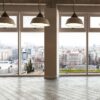What’s under your feet might be telling clients and customers more than you realize.
Flooring isn’t just a design detail. It’s a decision that affects comfort, performance, safety, and how your space is perceived. In business settings, those few square inches of material you choose can influence everything from productivity to how people feel about your brand. Sounds like an exaggeration? It’s not.
Let’s dig into why flooring plays a much bigger role in business environments than most people give it credit for.
First Impressions Start at the Floor
When someone walks into a commercial space, their senses kick in immediately. They notice lighting, layout, temperature, and yes, flooring. They may not consciously register it, but the feel of the surface underfoot creates a subtle but powerful impression.
Sleek, clean floors can give off a sense of professionalism. Worn, noisy, or dated flooring can do the opposite. Whether it’s an office, store, clinic, or studio, the floor contributes to the overall feeling of trust, comfort, and credibility. If your business space is meant to project reliability and attention to detail, your flooring should reflect that.
It Affects More Than Looks
Design matters, but the role of commercial flooring goes far beyond appearance. Functionality is just as important. Think about how your space is used each day. High-traffic areas like lobbies, hallways, or waiting rooms require durability. Meeting rooms need to support a quieter, more focused atmosphere. Work areas need materials that support long periods of standing or movement without causing fatigue.
Here’s where flooring really starts to show its value. The right surface can:
- Reduce noise – Important in open-plan offices or places where privacy matters
- Improve safety – Slip resistance, ease of navigation, and even color contrast help prevent accidents
- Support hygiene – Some materials are better for environments that require frequent cleaning
- Enhance comfort – Especially for people who are standing or walking for extended periods
A bad flooring choice can lead to increased maintenance, faster wear and tear, and even workplace injuries. The cost of replacing or repairing it adds up fast, not to mention the disruption.
Every Industry Has Different Needs
There’s no one-size-fits-all when it comes to flooring in business spaces. What works in a boutique may be totally wrong for a warehouse. Here are a few examples to consider:
Offices
Office floors need to strike a balance between style and acoustics. If it’s too hard, sound echoes. If it’s too soft, furniture leaves dents or becomes hard to move. Carpet tiles are often used for this reason, but that’s just one option.
Retail
Stores face heavy foot traffic and the pressure of maintaining a flawless appearance. The floor has to be both attractive and tough enough to handle shoes, carts, spills, and constant cleaning.
Hospitality
In restaurants or hotels, flooring has to create a certain mood. Warmth, cleanliness, and ease of movement all matter. It also needs to be safe, especially in places where liquids might be spilled.
Healthcare
Cleanliness is a top priority here. Flooring has to be sterile-friendly, slip-resistant, and durable under rolling equipment. It should also offer some comfort underfoot, especially in areas where staff are standing for long periods.
Industrial and Warehousing
These environments are hard on floors. They demand surfaces that can hold up against heavy machinery, chemicals, and constant movement. At the same time, the floor must minimize fatigue and avoid slips.
Hidden Costs of the Wrong Flooring
Choosing the wrong flooring doesn’t always show up right away. But over time, it leads to unnecessary costs. Maintenance bills increase, cleaning becomes harder, and replacement may come sooner than expected.
There’s also the cost of downtime. If flooring needs repair or replacement during business hours, it disrupts operations. Staff may be forced to work around noisy tools or closed areas. Customers may be turned away or put off by the mess.
Then there’s the risk factor. A slippery surface or uneven floor could cause someone to fall. If that happens, the legal and financial consequences can be serious. Not to mention the damage to your business reputation.
Flooring and Branding Go Hand in Hand
Yes, even the floor plays a role in how people see your brand. From color choices to material textures, the flooring helps tell your story. A high-end studio might lean into polished finishes, while a creative agency could go bold with patterns or color.
Think of the floor as part of the visual identity of the space. It supports the tone you’re setting with your decor, furniture, and lighting. If the flooring doesn’t align with that tone, something will feel off to anyone walking in.
And it’s not just about the customers. Employees notice these things too. A well-designed workspace, including the floors, helps with morale and pride in the environment. It shows that the business cares about quality and detail.
Final Thoughts: Step Wisely
Floors are easy to overlook, yet they’re one of the most used, most visible parts of any business environment. When chosen with care, flooring supports everything else you’re trying to achieve. It keeps people safe, makes your space look better, and sets the tone for how your business is experienced.
It’s not just what people walk on. It’s part of the experience they walk away with.








